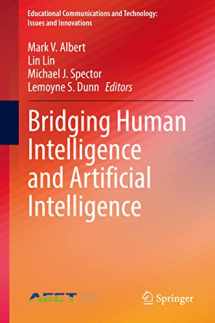
Bridging Human Intelligence and Artificial Intelligence (Educational Communications and Technology: Issues and Innovations)
Book details
Summary
Description
This edited volume is based on contributions from the TCET-AECT “Human-Technology Frontier: Understanding the Learning of Now to Prepare for the Work of the Future Symposium” held in Denton, Texas on May 16-18, sponsored by AECT. The authors embrace an integrative approach to designing and implementing advances technologies in learning and instruction, and focus on the emerging themes of artificial intelligence, human-computer interactions, and the resulting instructional design. The volume will be divided into four parts: (1) Trends and future in learning and learning technologies expected in the next 10 years; (2) Technologies likely to have a significant impact on learning in the next 10 years; (3) Challenges that will need to be addressed and resolved in order to achieve significant and sustained improvement in learning; and (4) Reflections and insights from the Symposium that should be pursued and that can form the basis for productive research collaborations. The primary audience for this volume is academics and researchers in disciplines such as artificial intelligence, cognitive science, computer science, educational psychology, instructional design, human-computer interactions, information science, library science, and technology integration.


We would LOVE it if you could help us and other readers by reviewing the book
Book review



